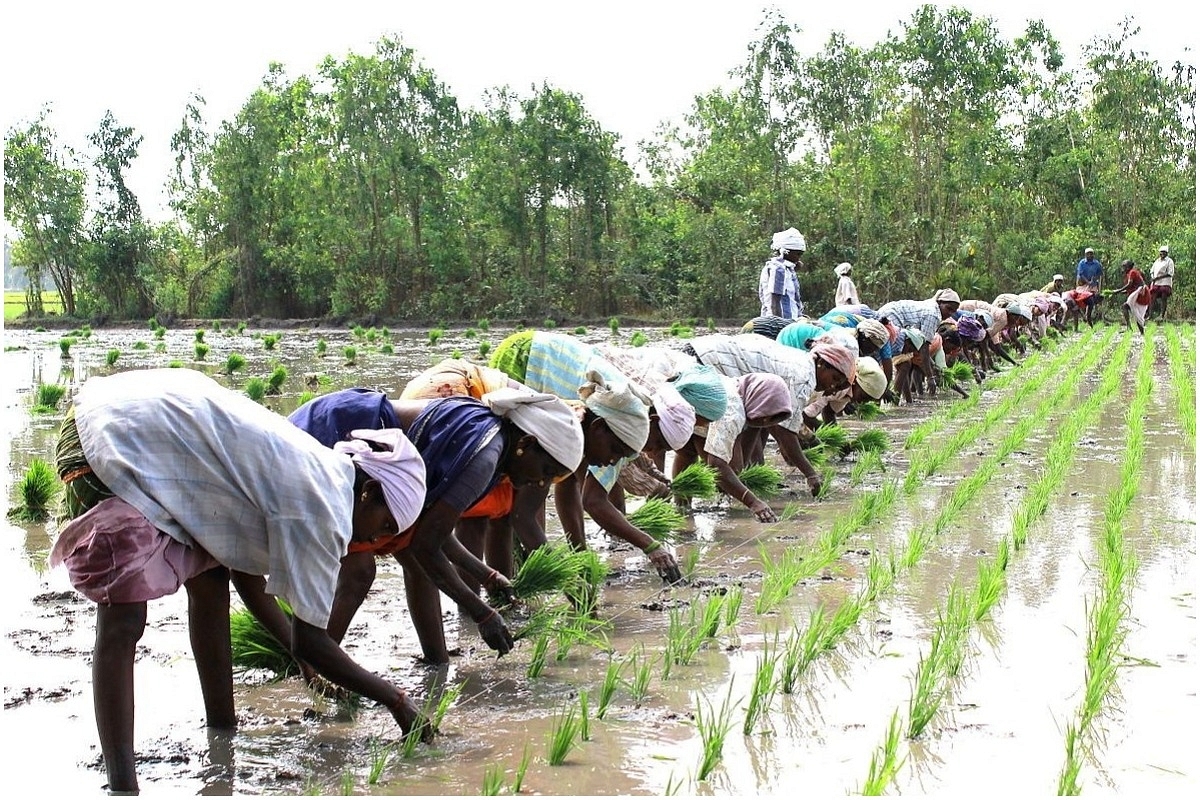News Brief
IARI Technique That Creates Genetically Modified Plants Without Conventional Transgenic Technology Awaits Approval
- Scientists at the Indian Agricultural Research Institute (IARI) are using a technique which allows plants to be genetically modified without the need for conventional transgenic technology.
- A research proposal — pending for almost two years before the authorities — asks Indian regulators to consider this technique as equivalent to conventional breeding methods, since it does not involve inserting any foreign DNA into the plant.

A paddy field.
While the Union government investigates allegations of unauthorised genetically modified (GM) rice being exported to European countries while being branded as 'organic', scientists at the Indian Agricultural Research Institute (IARI) are using a technique which allows plants to be genetically modified without the need for conventional transgenic technology.
A research proposal for the same is pending before the Genetic Engineering Appraisal Committee for almost two years. The proposal asks the Indian regulators to consider this technique as equivalent to conventional breeding methods, since it does not involve inserting any foreign DNA into the plant.
The resilient and high-yield rice varieties developed using such gene editing techniques, which have already been approved by many countries, can be in the hands of the Indian farmers by 2024.
Recently, IIAR scientists developed India’s first non-GMO, herbicide-tolerant rice variety that is suitable for direct seeding — Pusa Basmati 1979 and Pusa Basmati 1985.
The variety was developed by crossing popular rice varieties with an upland drought-tolerant rice variety.
Crops are made herbicide-tolerant through mutation breeding, not genetic modification. Scientists use a chemical mutant used to remove the binding site for the herbicide.
After this site is removed, the plant is not harmed by the herbicide.
This becomes important for the rice crop as the variety can enable the use of less amount of water. Currently, in the rice transplantation method, rice seedlings are transplanted from the nursery into the flooded field.
Water is a natural herbicide that takes care of weeds in the paddy crop’s early-growth period.
The new varieties simply replace water with Imazethapyr and there’s no need for nursery, puddling, transplanting and flooding of fields. One can sow paddy directly, just like wheat.
Direct Seeding of Rice
Under this method, pre-germinated seeds are directly drilled into the field by a tractor-powered machine, instead of preparation of nurseries, transplanting paddy, and flooding of fields. Instead, chemical herbicides are used to kill weeds.
It is estimated to need 30 per cent less water, save Rs 3,000 per acre in transplantation labour charges, and also 10-15 days’ time due to no nursery preparation.
As opposed to the conventional method, DSR leads to savings on electricity costs, and labour costs. It leads to groundwater conservation and reduces methane emissions due to a shorter flooding period and decreased soil disturbance compared to transplanting rice seedlings.
However, Direct Seeding of Rice requires herbicide tolerant, short duration and high yield varieties. The seed requirement for DSR is also high, 8-10 kg/acre, compared to 4-5 kg/acre in transplanting. Laser land levelling is compulsory in DSR. This is not so in transplanting. Also, sowing needs to be done timely so that the plants have come out properly before the monsoon rains arrive.
What Next
The IARI has previously worked on golden rice, a traditional GM variety which inserted genes from other organisms into the rice plant to enhance its nutritive value. However, IARI had to end trials over five years ago due to agronomic issues, The Hindu quoted IARI Director A K Singh as saying.
The Institute is now working on newer technologies such as Site Directed Nuclease (SDN) 1 and 2. They aim to bring precision and efficiency into the breeding process using gene editing tools such as CRISPR.
“In this case, you are just tweaking a gene that is already there in the plant, without bringing in any gene from outside. When a protein comes from an outside organism, then you need to test for safety. But in this case, this protein is right there in the plant, and is being changed a little bit, just as nature does through mutation,” said Singh.
“But it is much faster and far more precise than natural mutation or conventional breeding methods which involve trial and error and multiple breeding cycles,” he added.
Support Swarajya's 50 Ground Reports Project & Sponsor A Story
Every general election Swarajya does a 50 ground reports project.
Aimed only at serious readers and those who appreciate the nuances of political undercurrents, the project provides a sense of India's electoral landscape. As you know, these reports are produced after considerable investment of travel, time and effort on the ground.
This time too we've kicked off the project in style and have covered over 30 constituencies already. If you're someone who appreciates such work and have enjoyed our coverage please consider sponsoring a ground report for just Rs 2999 to Rs 19,999 - it goes a long way in helping us produce more quality reportage.
You can also back this project by becoming a subscriber for as little as Rs 999 - so do click on this links and choose a plan that suits you and back us.
Click below to contribute.
Latest